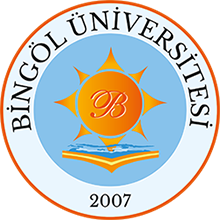Fluorogenic signalling of inorganic sulfites by water-soluble 2-/3-formyl-BODIPY dyes
Özet
Fluorogenic sensing and signalling of biologically relevant small molecules, with a major emphasis on sulfur containing ones, draws a great deal of attention. Among these, sulfur dioxide (SO2), a well-known air pollutant and a common food preservative/additive (E220–228), both in the form of gas and/or alkali salts (sulfites), is at the focus of many recent works.1 Sulfites are also commonly used to prevent browning of foods and beverages. However, exposure to high doses of them by either topical, oral, or parental feeding is reported to be associated with a number diseases such as allergic asthma, urticarial, dermatitis, hypotension, and abdominal pain. Consequently, the use of sulfites as antimicrobial agents/food additives is restricted by both local and international legislation (upper limit = 0.7 mgkg-1 of body weight; World Health Organisation—WHO). Furthermore, sulfurdioxide is produced endogenously and found to exhibit unique bioactivities such as vasodilatation and lowering of blood pressure, and thus, is speculated to be a gasotransmitter. Building upon these, both signalling and quantification of sulfites in a sample of food/beverage or in biological matrices is of great importance, both fundamental and practical. Although a large number of sulfite probes have been developed so far, most of them yet suffer from low sulfite selectivity, low water solubility, long incubation times and strong pH dependency, all of which reduce the chances of their use in practical applications.
Herein we wish to describe some water-soluble 2-/3-formyl-BODIPY dyes to address that challenge (vide supra). Bodipy is chosen as the signalling unit of the probes because of their excellent photophysical and phsyco-chemical properties, such as high photostability, non-agregation in water, low pH dependent emission, narrow bandwidths, and absorbtion/emission in the visible region of electromagnetic radiation etc. To this end, we introduced some water-solubilizing groups of both neutral2 and ionic character through meso- (or 8-) position of the Bodipy fluorophores. These water soluble dyes are then made to carry formyl functionality at 2- and 3-positions of the BODIPY core by making use of recently established protocols to unravel the role of substitution pattern of the peripheral formyl unit, if any. Among 2- and 3-formyl dyes, 3-substituted one gave the largest emission enhancement (>40-fold) upon sulfite attack in aqueous solutions and water. Its low pH dependency coupled with exceptional sulfite specificity over a number of competing biocongeners and anions makes it promising for many applications. The sensing mechanism is speculated on the well-known sulfite-aldehyde reaction, which is expected to unblock the internal charge transfer (ICT) and/or photo-induced electron transfer (PET) processes and thereby restore the fluorescence emission of unaltered BODIPY dye by breaking the π-conjugation (sp2→sp3).
Bağlantı
http://hdl.handle.net/11472/680Koleksiyonlar
- Makine Mühendisliği [27]

DSpace@BİNGÖL by Bingöl University Institutional Repository is licensed under a Creative Commons Attribution-NonCommercial-NoDerivs 4.0 Unported License..













